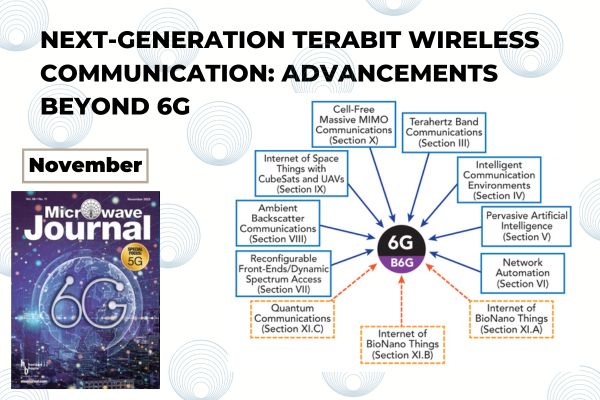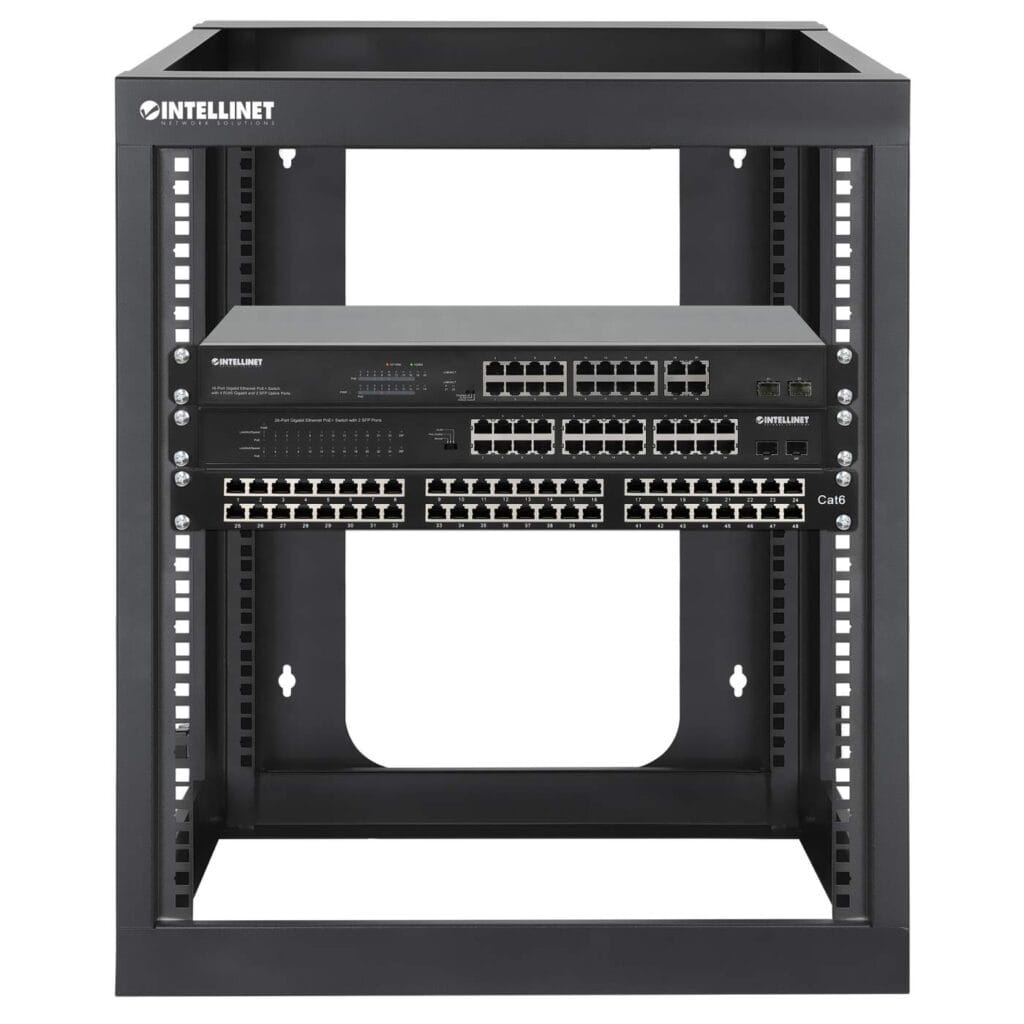There are five generations of wireless technology. Each generation marks a significant advancement in speed and connectivity.
Wireless technology has transformed how we communicate and access information. From the early days of 1G to the latest innovations of 5G, each generation has brought new capabilities and improvements. Understanding these generations helps us appreciate how far we have come and what future advancements may bring.
This blog will explore the history and features of each generation, highlighting the key changes that have shaped our digital landscape. Whether you are a tech enthusiast or a curious learner, this overview will provide valuable insights into the evolution of wireless technology.
Introduction To Wireless Technology
Wireless technology has transformed how we connect and communicate. It enables devices to interact without physical cables. The convenience it provides is unmatched. From mobile phones to smart homes, wireless tech is everywhere. Its impact is profound and continues to grow.
Evolution Of Wireless Tech
Wireless technology has evolved through various generations. Each generation brought new features and improvements. The first generation introduced basic voice services. The second generation added text messaging and better quality. The third generation made mobile internet possible. Fourth generation enhanced speed and connectivity. Fifth generation focuses on faster and more reliable connections. This evolution continues to shape our daily lives.
Importance In Modern Life
Wireless technology is crucial in today’s world. It supports communication across the globe. Businesses rely on it for efficient operations. Education benefits from wireless access to resources. Healthcare uses wireless for patient monitoring and data management. Social interactions thrive on wireless networks. Its role in modern life is significant and growing.

Credit: www.microwavejournal.com
First Generation (1g)
Wireless technology began with the first generation, known as 1G. This generation introduced analog voice calls, allowing basic mobile communication. Developed in the 1980s, 1G paved the way for future advancements in wireless technology.
Wireless technology has come a long way. It all started with the first generation, or 1G. If you were around in the early 1980s, you might remember those big, clunky mobile phones. They were revolutionary at the time, but by today’s standards, they seem ancient. Let’s delve into what 1G was all about.
Analog Transmission
First-generation wireless technology used analog transmission. Unlike the digital systems we use today, 1G relied on analog signals to transmit voice. Imagine a radio station signal; it’s continuous and flows like a wave. That’s how 1G phones worked. They converted voice into continuous electronic signals.
Analog transmission had its quirks. The quality was often poor, and calls could easily drop. Remember the static noise on old landline phones? That was a common issue with 1G as well.
Key Features
1G had some notable features despite its limitations. One of the most significant was the ability to make mobile calls. You could walk around and talk on the phone, which was a big deal back then.
However, there were downsides. The battery life was short, and the phones were huge. Carrying one felt like lugging around a small brick. Also, the network coverage was limited. You couldn’t get a signal everywhere.
Think about it—would you trade your sleek smartphone for a heavy, unreliable 1G phone? Probably not. But back then, it was cutting-edge technology.
1G laid the groundwork for the wireless technology we use today. It was the starting point for all the advancements that followed. How do you think our current tech will look to future generations?
Second Generation (2g)
The Second Generation of wireless technology, known as 2G, marked a significant shift from its predecessor. Introduced in the early 1990s, 2G brought new possibilities and set the stage for modern mobile communications. With 2G, mobile phones became more than just a tool for voice calls. They began to support digital communication, which opened doors to various services.
Digital Transmission
2G introduced digital transmission, which replaced analog signals. This change improved the clarity of voice calls, reducing noise and interference. Digital signals were more secure, making it harder for others to eavesdrop. This shift also allowed for better data compression, leading to efficient use of available bandwidth. Users experienced clearer sound quality and more reliable connections.
Introduction Of Sms
With 2G, the world saw the introduction of SMS, or Short Message Service. This feature allowed users to send text messages between mobile devices. SMS became an instant hit, as it offered a quick way to communicate. Users could send messages anywhere, anytime, without making a voice call. SMS quickly became a popular form of communication, loved for its convenience and simplicity.

Credit: www.researchgate.net
Third Generation (3g)
Wireless technology has evolved through several generations, with the Third Generation (3G) enhancing mobile internet connectivity. This generation allowed faster data transfer, enabling video calls and mobile web browsing.
The Third Generation (3G) of wireless technology marked a significant shift in how we connect and communicate. It introduced us to a world where mobile phones were no longer just for calls and texts but became gateways to the internet. This evolution not only changed the way we used our devices but also how we lived our daily lives.
Mobile Internet
With 3G, mobile internet became a reality for the masses. Suddenly, you could check emails, browse websites, and even stream music on the go. This was a game-changer; the internet was no longer tethered to a desktop or laptop.
Have you ever tried to navigate using a printed map? With 3G, mobile maps and GPS applications made traveling less stressful. You could find the nearest coffee shop without asking for directions or getting lost.
Enhanced Data Rates
3G brought enhanced data rates, making downloads faster and more reliable. This improvement meant sending photos and videos was easier and quicker, a huge leap from the sluggish speeds of 2G.
Do you remember waiting for ages to download a song? With 3G, those wait times dramatically reduced, allowing you to enjoy media almost instantaneously.
These enhancements weren’t just about speed. They paved the way for video calls, turning science fiction into everyday reality. Engaging with loved ones across the globe became as simple as dialing a number.
Imagine a world without video calls or mobile internet. Would you still carry around printed photos or maps? 3G made such conveniences part of everyday life, setting the stage for the generations of wireless technology that followed.
Fourth Generation (4g)
The Fourth Generation, commonly known as 4G, transformed wireless communication. It brought faster data speeds and improved connectivity. Users noticed a significant change in how they accessed the internet. It was a leap forward from previous generations.
High-speed Internet
4G introduced high-speed internet to mobile devices. It allowed users to stream videos seamlessly. Large downloads became quicker and easier. Browsing the web felt smooth and efficient. High-speed internet altered daily mobile usage. People could do more with their phones.
Impact On Mobile Apps
Mobile apps evolved with 4G’s capabilities. Developers created more sophisticated applications. Apps with real-time features became popular. Online gaming on mobile surged in popularity. Social media apps enhanced their interactive elements. Video calls became more reliable.
4G changed how apps functioned. They offered richer experiences. Users could access complex apps without delays. This expanded the possibilities for app development. It paved the way for future innovations in mobile technology.

Credit: support.chinavasion.com
Fifth Generation (5g)
Wireless technology has advanced through five generations. 5G, the latest, offers faster speeds and better connectivity. Each generation improved communication, making our devices smarter and more efficient.
Imagine a world where downloading a full-length movie takes just seconds, or where your home devices communicate seamlessly without any lag. Welcome to the era of Fifth Generation (5G) wireless technology. This groundbreaking advancement promises to deliver faster speeds, smarter connectivity, and a more efficient way to interact with technology. But what exactly sets 5G apart from its predecessors? Let’s dive into the specifics.
Ultra-fast Speeds
5G is a game-changer when it comes to speed. We’re talking about speeds that are 10 to 100 times faster than what 4G offers. This means that tasks like streaming high-definition videos or downloading large files can be done in a blink.
Imagine being at a concert and sharing live video with your friends without any buffering. That’s the power of 5G. You can be more productive and enjoy entertainment without the usual interruptions.
Doesn’t it make you wonder how much smoother your daily tech interactions could be?
Iot Integration
5G isn’t just about speed; it’s about connecting more devices. The Internet of Things (IoT) thrives on 5G’s capacity to link billions of gadgets effortlessly. Think of a smart home where your fridge talks to your phone to remind you of groceries.
Or consider smart cities with traffic lights that adjust in real-time based on congestion. These are not distant dreams but achievable realities with 5G.
Are you ready to embrace a world where everything around you is interconnected?
The beauty of 5G lies in its potential to make life simpler and smarter. Whether it’s ultra-fast speeds or seamless IoT integration, 5G is here to transform your everyday experiences. As you ponder its possibilities, think about how this technology can redefine your personal and professional life. How will you harness the power of 5G to make your daily routines more efficient?
Future Of Wireless Technology
The future of wireless technology holds immense promise. With each new generation, the capabilities expand. Connectivity becomes faster and more efficient. We stand on the brink of a new era with 6G. It aims to transform how we interact with technology. This future promises more than just faster speeds. It offers the potential for groundbreaking applications. Let’s explore what lies ahead in wireless technology.
6g Possibilities
6G technology promises to exceed current capabilities. It aims to deliver speeds up to 100 times faster than 5G. This could bring new experiences in augmented and virtual reality. Imagine streaming ultra-high-definition content instantly. 6G could also enhance the Internet of Things. Smart cities and homes may become more connected. Autonomous vehicles could communicate seamlessly. It may also improve healthcare with remote surgeries. The possibilities seem vast and exciting.
Challenges Ahead
Despite the potential, challenges exist. Developing 6G technology requires vast resources. It demands new infrastructure and equipment. Compatibility with existing networks poses another hurdle. Security remains a significant concern. Protecting data becomes even more critical. Privacy issues need addressing. The environmental impact of new infrastructure is also important. Sustainable practices must be considered. Navigating these challenges is essential for 6G success.
Frequently Asked Questions
What Are The Generations Of Wireless Technology?
There are five generations: 1G, 2G, 3G, 4G, and 5G. Each generation improved speed, connectivity, and reliability.
How Does 5g Differ From 4g?
5G offers faster speeds, lower latency, and higher capacity than 4G. It supports more connected devices and improved performance.
When Was 1g Introduced?
1G was introduced in the 1980s. It marked the beginning of wireless communication with analog signals.
What Advancements Did 3g Bring?
3G introduced mobile internet access, video calling, and better voice quality. It improved data transmission speeds significantly.
Conclusion
Wireless technology has evolved through several generations. Each brought unique advancements. From 1G to 5G, progress never stopped. Better speed, more connections, and improved reliability define these changes. Future generations promise even more exciting possibilities. They will transform how we communicate and connect.
Understanding these generations helps us appreciate technology’s rapid growth. Stay updated as technology continues to advance. It shapes our world in remarkable ways. Always be curious and eager to learn. The journey of wireless technology is far from over.










